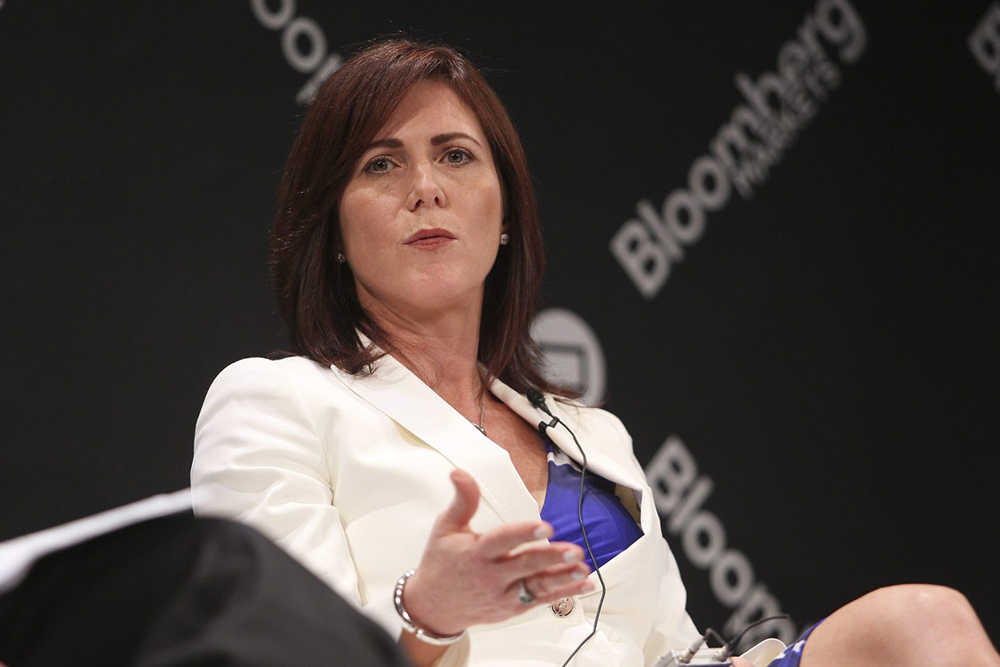
艾维·泽尔曼早在预言2008年房地产市场崩溃之前,就已经被称为“毒藤女”。她在中学时不喜欢这个绰号,但时过境迁,作为沃克邓禄普公司(Walker & Dunlop)旗下的Zelman & Associates公司的执行副总裁,现在她认为这个绰号是荣誉勋章。在次贷危机爆发前几年,她曾担任瑞士信贷(Credit Suisse)的分析师,从事房屋建筑商分析。她解释称,房价过高,人们难以负担,贷款市场变得疯狂,建筑商正在购买土地和盲目扩张。泽尔曼说道:“买房可以零首付,还有以虚假方式获得贷款的情况。”
泽尔曼回忆道:“人们以前开玩笑说:‘某一天,她的预言会成真。’”2005年夏,她的团队发布了一份名为《疯狂的投资者》(Investors Gone Wild)的报告。当年下半年,市场开始恶化,泽尔曼更加坚定了自己的立场。2006年,在由超大型住宅建筑商Toll Brothers时任首席执行官鲍勃·托尔主持的营收电话会议上,托尔表示情况正在好转,或许房地产市场已经触底。泽尔曼的回应广为人知。她表示:“你是喝了什么酷爱(Kool-Aid)饮料了吗?我也想来点儿。”
然而,当年股市反弹,而房地产市场被认为正在复苏。但她依旧没有改变立场;泽尔曼仍然持悲观态度。她说道:“那段时间很艰难。我有许多不愉快的夜晚。”但在那次电话会议几个月后,她的预测得到了验证。当时美国抵押贷款机构新世纪(New Century)申请破产。该公司在2006年曾发放了516亿美元次级贷款。泽尔曼表示:“这是末日的开始。”房地产市场崩溃,这也成为引发全球金融危机的导火索。
新的困境
不到二十年后,美国房地产市场面临新的困境。泽尔曼认为,房地产市场最严重的问题是可负担性不足。史上最低的抵押贷款利率和新冠疫情带来了房地产市场繁荣;房价暴涨,而且随着美联储为控制顽固的通胀选择加息,最终抵押贷款利率也随之大幅上涨。泽尔曼表示,情况或许略有好转,但许多人买不起房,他们在二十五甚至接近三十岁之前,只能住在父母家中,而且“这导致人们推迟了组建家庭的时间”。
这与金融危机前几年或整个金融危机期间的情况都截然不同,因为目前全美房价并未下滑,而是在上涨。但房屋销量,确切地说是现房销量,却大幅下降。她提到去年的情况时说道:“你从未见过房价大幅上涨的同时成交量下跌的情况。”去年,现房销量降至近三十年来的最低点。人们不想失去之前锁定的低抵押贷款利率,因此暂停卖房,而且房屋库存量不足,即使他们选择卖房,还要面临去哪里买新房的问题。虽然随着成交量增加,现房销售有所改善,但泽尔曼预测现房销售无法恢复到通常水平,因为人口结构方面也有一些不利因素。泽尔曼解释说,随着人口老龄化,当X世代和婴儿潮一代老去,他们的搬家次数会越来越少。
房地产市场似乎陷入了停滞,而现房市场尤其如此。但我们看到人们有时候确实不得不搬家。幸运的是,由于这种流动,房屋库存增加。在一些有大量库存的大都市区,房价正在下降或趋于平稳。而且现房库存增加不仅仅是因为推迟搬家的人们终于决定搬家,另外一个原因是新房增多。最近,新房销售出人意料地表现良好,部分原因是建筑商开始建设较小的住宅,或者提供激励以刺激需求:其中一个重要的激励措施是抵押贷款利率买断。泽尔曼表示:“房屋可负担性依旧非常紧张,因此目前房地产市场处于一种艰难的状态。”美国房地产市场在一段时间内可能要陷入这种状态。
而且泽尔曼表示,尽管人们纷纷猜测,但美联储降息并不意味着抵押贷款利率下降,这呼应了她的同事本月早些时候发表的类似观点。抵押贷款利率与10年期美国国债的收益率息息相关,两者之家的差异被称为“利差”,目前利差远高于历史平均水平,这代表美国的经济环境极其复杂。美国的债券市场已经反映出对美联储降息的预期,这是抵押贷款市场可能面临风险的另外一个信号,也引发了对信贷质量的担忧。泽尔曼认为,未来一两年,抵押贷款利率只会能下降0.50%。她表示:“抵押贷款利率仍将维持在6%左右,这意味着可负担性依旧紧张。”
好消息?
最近几个月,房价上涨速度放缓,并且表现出进一步放缓的迹象。泽尔曼表示:“我们预测房价上涨会持续减速,而且在今年下半年会更加明显,房价涨幅会降至低个位数。这是因为,我们认为房屋库存将继续给房价带来下行压力。”然而,由于新房建设地点存在差异,有些城市的房价可能并未放慢上涨的速度。(财富中文网)
译者:刘进龙
审校:汪皓
艾维·泽尔曼早在预言2008年房地产市场崩溃之前,就已经被称为“毒藤女”。她在中学时不喜欢这个绰号,但时过境迁,作为沃克邓禄普公司(Walker & Dunlop)旗下的Zelman & Associates公司的执行副总裁,现在她认为这个绰号是荣誉勋章。在次贷危机爆发前几年,她曾担任瑞士信贷(Credit Suisse)的分析师,从事房屋建筑商分析。她解释称,房价过高,人们难以负担,贷款市场变得疯狂,建筑商正在购买土地和盲目扩张。泽尔曼说道:“买房可以零首付,还有以虚假方式获得贷款的情况。”
泽尔曼回忆道:“人们以前开玩笑说:‘某一天,她的预言会成真。’”2005年夏,她的团队发布了一份名为《疯狂的投资者》(Investors Gone Wild)的报告。当年下半年,市场开始恶化,泽尔曼更加坚定了自己的立场。2006年,在由超大型住宅建筑商Toll Brothers时任首席执行官鲍勃·托尔主持的营收电话会议上,托尔表示情况正在好转,或许房地产市场已经触底。泽尔曼的回应广为人知。她表示:“你是喝了什么酷爱(Kool-Aid)饮料了吗?我也想来点儿。”
然而,当年股市反弹,而房地产市场被认为正在复苏。但她依旧没有改变立场;泽尔曼仍然持悲观态度。她说道:“那段时间很艰难。我有许多不愉快的夜晚。”但在那次电话会议几个月后,她的预测得到了验证。当时美国抵押贷款机构新世纪(New Century)申请破产。该公司在2006年曾发放了516亿美元次级贷款。泽尔曼表示:“这是末日的开始。”房地产市场崩溃,这也成为引发全球金融危机的导火索。
新的困境
不到二十年后,美国房地产市场面临新的困境。泽尔曼认为,房地产市场最严重的问题是可负担性不足。史上最低的抵押贷款利率和新冠疫情带来了房地产市场繁荣;房价暴涨,而且随着美联储为控制顽固的通胀选择加息,最终抵押贷款利率也随之大幅上涨。泽尔曼表示,情况或许略有好转,但许多人买不起房,他们在二十五甚至接近三十岁之前,只能住在父母家中,而且“这导致人们推迟了组建家庭的时间”。
这与金融危机前几年或整个金融危机期间的情况都截然不同,因为目前全美房价并未下滑,而是在上涨。但房屋销量,确切地说是现房销量,却大幅下降。她提到去年的情况时说道:“你从未见过房价大幅上涨的同时成交量下跌的情况。”去年,现房销量降至近三十年来的最低点。人们不想失去之前锁定的低抵押贷款利率,因此暂停卖房,而且房屋库存量不足,即使他们选择卖房,还要面临去哪里买新房的问题。虽然随着成交量增加,现房销售有所改善,但泽尔曼预测现房销售无法恢复到通常水平,因为人口结构方面也有一些不利因素。泽尔曼解释说,随着人口老龄化,当X世代和婴儿潮一代老去,他们的搬家次数会越来越少。
房地产市场似乎陷入了停滞,而现房市场尤其如此。但我们看到人们有时候确实不得不搬家。幸运的是,由于这种流动,房屋库存增加。在一些有大量库存的大都市区,房价正在下降或趋于平稳。而且现房库存增加不仅仅是因为推迟搬家的人们终于决定搬家,另外一个原因是新房增多。最近,新房销售出人意料地表现良好,部分原因是建筑商开始建设较小的住宅,或者提供激励以刺激需求:其中一个重要的激励措施是抵押贷款利率买断。泽尔曼表示:“房屋可负担性依旧非常紧张,因此目前房地产市场处于一种艰难的状态。”美国房地产市场在一段时间内可能要陷入这种状态。
而且泽尔曼表示,尽管人们纷纷猜测,但美联储降息并不意味着抵押贷款利率下降,这呼应了她的同事本月早些时候发表的类似观点。抵押贷款利率与10年期美国国债的收益率息息相关,两者之家的差异被称为“利差”,目前利差远高于历史平均水平,这代表美国的经济环境极其复杂。美国的债券市场已经反映出对美联储降息的预期,这是抵押贷款市场可能面临风险的另外一个信号,也引发了对信贷质量的担忧。泽尔曼认为,未来一两年,抵押贷款利率只会能下降0.50%。她表示:“抵押贷款利率仍将维持在6%左右,这意味着可负担性依旧紧张。”
好消息?
最近几个月,房价上涨速度放缓,并且表现出进一步放缓的迹象。泽尔曼表示:“我们预测房价上涨会持续减速,而且在今年下半年会更加明显,房价涨幅会降至低个位数。这是因为,我们认为房屋库存将继续给房价带来下行压力。”然而,由于新房建设地点存在差异,有些城市的房价可能并未放慢上涨的速度。(财富中文网)
译者:刘进龙
审校:汪皓
Ivy Zelman was “Poison Ivy” long before she called the 2008 housing crash. She didn’t like the nickname much in middle school, but things have changed, and the executive vice president of Walker & Dunlop company Zelman & Associates now considers it a badge of honor. She was an analyst at Credit Suisse who followed homebuilders in the years before the subprime mortgage crisis. Housing was unaffordable, lending was bonkers, and builders were buying land and scaling frivolously, she explained. “There was no money down and liar loans,” Zelman said.
“People used to joke, ‘Oh, someday she’ll be right,’” Zelman recalled, and in the summer of 2005, her team released a report called “Investors Gone Wild.” In the second half of the year, the market started to turn for the worse, and she doubled down. During a 2006 earnings call with Bob Toll, then–chief executive of McMansion builder Toll Brothers, Toll said things were getting better, and maybe the housing market had bottomed. Zelman famously responded: “Which Kool-Aid are you drinking, because I want some.”
Yet stocks rallied that year, and the housing market was thought to be recovering. Still, she wasn’t convinced; Zelman kept her bearish tune. “That was hard,” she said. “There were many nights where I could tell you that it wasn’t fun.” But she was vindicated months after that call, when mortgage lender New Century, which issued $51.6 billion in subprime loans in 2006, filed for Chapter 11 bankruptcy. “That was the beginning of the end,” Zelman said. The housing market crashed, and it was a catalyst for the Great Financial Crisis.
A new predicament
Less than two decades later, and the housing world is in another predicament. Its most dire problem, as Zelman sees it, is a lack of affordability. Lower than ever mortgage rates and a pandemic fueled a housing boom; home prices skyrocketed, and eventually, mortgage rates did, too, once the Federal Reserve raised interest rates to tame scorching inflation. Things may be slightly better, but a lot of people can’t buy homes, so they are living with their parents until their mid- to late twenties, Zelman said, and “it’s delaying household formations.”
It isn’t the same as what happened in the years leading up to the financial crisis, or throughout it, because home prices haven’t fallen, not on a national scale; they actually rose. But sales, or rather existing-home sales, have plummeted. “You’ve never seen recessionary volume with home price inflation as robust as that was,” she said, referring to last year, when existing-home sales fell to their lowest point in almost three decades. People weren’t selling their homes, because they didn’t want to lose the low mortgage rate they’d locked in prior, and there was so little inventory that even if they chose to sell, there was a question of where they’d go. And while she sees existing-home sales improving as turnover increases, she doesn’t expect it to go back to typical levels, because there’s a demographic headwind, too. People are aging, and when Gen Xers and baby boomers age, they move less, Zelman explained.
Everything feels frozen in place, and in the existing-home camp, it kind of is. But people have to move sometime, and we’re already seeing it in real time. Luckily, because of that, inventory is increasing. So in some metropolitan areas where there’s substantial inventory, home prices are declining or are otherwise flat. And it isn’t simply an increase in existing stock as those who delayed moves finally do so, but the presence of new homes. New-home sales, until recently, have done surprisingly well, and part of that is because builders can construct smaller homes or offer incentives to springboard demand: Mortgage rate buydowns are a big one. Still, “affordability is pretty stretched, so the housing market’s kind of in a grind mode,” Zelman said, and we might be stuck in it for a bit.
And a Fed cut doesn’t necessarily mean mortgage rates will fall, despite what people tend to suspect, Zelman said, echoing her colleague who said something similar earlier in the month. Mortgage rates are correlated to the 10-year Treasury yield, but the difference between the two is called the “spread,” and the spread is much higher than historical norms, an indicator of a particularly complex economic environment. The bond market is already anticipating, and pricing in, a rate cut from the Fed, another sign of perceived risk in the mortgage market as well as concerns about credit quality. In the next one to two years, Zelman only sees mortgage rates declining 0.50%. “Mortgage rates will still have a six handle on them, and that means that we still have affordability that’s pretty stretched,” she said.
The upside?
In recent months, home-price inflation has slowed, and showed signs of slowing further. “We do expect deceleration to continue and see more pronounced slowing in the back half of the year into the low single digits, and I think that’s really because we view the inventory scenario as likely to continue to put downward pressure on home price,” Zelman said. However, because of the variation in where new-home construction occurs, there could be metros where home prices don’t ease at all.






